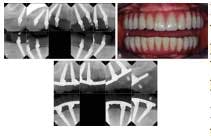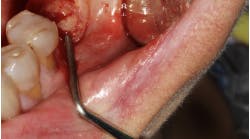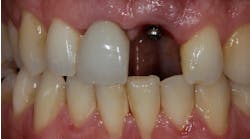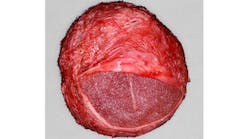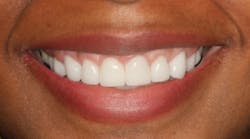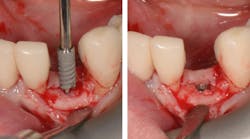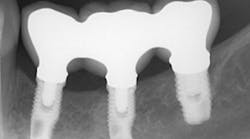Atrophic patients have more options with new dental implant
July 17, 2013
Patients with severe atrophy of the jaw are not typically considered good candidates for dental implants. However, the introduction of a new type of implant five years ago is challenging that standard. Combined with the All-on-Four concept of inserting the implants, the new implant can benefit a wider range of patients, including those with degeneration of bone in the upper or lower jaw.RELATED |Less invasive approach to dental implants allows heart patients to continue anticoagulation therapy The Journal of Oral Implantology reports outcomes of the All-on-Four treatment used with the NobelActive implant. Follow-up evaluations of 227 implants from one to three years after the procedure show a 98.7% implant survival rate.
In the All-on-Four concept, four implants are used to support an acrylic, screw-retained provisional prosthesis, then a final prosthesis about four months later. Although this method uses only four implants, two of them are placed distally tilted in areas where bone height, nerve proximity, or other conditions make it impossible to place the implant axially. This tilting allows the placement of longer implants that have good anchorage in the best positions for prosthetic support. Previously, standard practice called for dental implants of at least 4.0 mm in diameter. For tilted implants in particular, this was considered the smallest diameter that could guarantee sufficient anchorage. The NobelActive implant, introduced in 2008, made it possible to use a 3.5 mm diameter implant for patients with atrophic jaws. Featuring tapering, a variable thread, and an inward tapered collar, this implant offers self-drilling capacity and bone compression qualities. High torque values can be reached, giving the implant high initial stability.RELATED |Fluoride treatment of synthetic biomaterial assists dental bone regeneration Prior studies have found that failed implants using the All-in-Four method were a result of soft bone and lower insertion torque values. The combination of a 3.5 mm diameter implant and the All-on-Four technique brings new treatment possibilities to patients with severe bone deficiencies.Full text of the article, “A New Approach to the All-on-Four Treatment Concept Using Narrow Platform NobelActive Implants,” Journal of Oral Implantology, Vol. 39, No.3, 2013, is available here.About Journal of Oral Implantology The Journal of Oral Implantology is the official publication of the American Academy of Implant Dentistry and of the American Academy of Implant Prosthodontics. It is dedicated to providing valuable information to general dentists, oral surgeons, prosthodontists, periodontists, scientists, clinicians, laboratory owners, and technicians, manufacturers, and educators. The JOI distinguishes itself as the first and oldest journal in the world devoted exclusively to implant dentistry. For more information about the journal or society, please visit their website.
